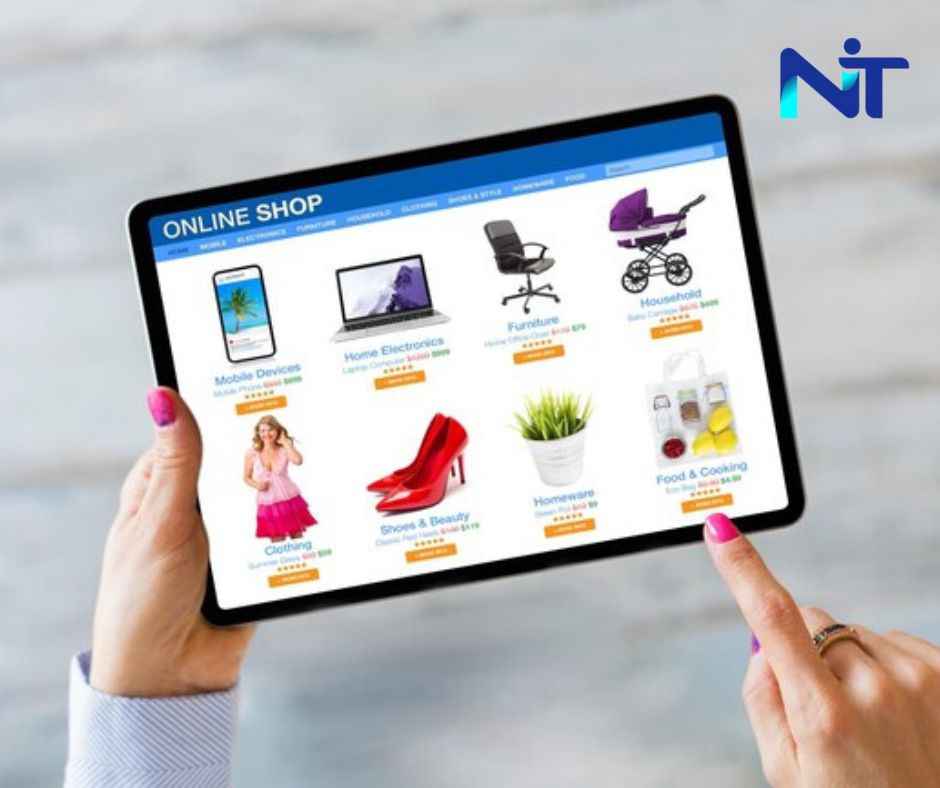This case study focuses on the UX/UI design process undertaken by a startup to create an engaging and user-friendly ecommerce website. The goal is to outline the key steps and considerations involved in designing an intuitive interface that enhances the user experience, drives conversions, and establishes a strong brand presence.
- Research and Discovery: To kickstart the UX/UI design process, extensive research was conducted to gain insights into the target market, competitors, and user preferences. The following activities were carried out:
a. User Research: Interviews, surveys, and usability testing sessions were conducted with potential users to understand their shopping behaviors, preferences, and pain points. This research helped identify their needs, expectations, and motivations when interacting with an ecommerce website.
b. Competitor Analysis: A comprehensive analysis of the ecommerce market and competitor websites was performed to identify best practices, industry trends, and opportunities for differentiation. This analysis guided the design team in creating a unique and compelling user experience.
- User Personas and User Journeys: Based on the user research findings, fictional user personas representing the target audience were developed. Each persona captured the characteristics, goals, and challenges faced by specific user segments. User journeys were then mapped out to understand the end-to-end user experience, identifying touchpoints and pain points.
- Information Architecture: A clear and intuitive information architecture (IA) was established to organize the website’s content and features. The IA aimed to provide easy navigation, efficient product discovery, and a streamlined checkout process. Card sorting exercises and user feedback were employed to refine the IA and ensure seamless user flow.
- Wireframing and Prototyping: Wireframes were created to visualize the website’s layout and structure, emphasizing key user flows and interface elements. These wireframes served as a blueprint for the design and development process. Low-fidelity prototypes were developed to validate and refine the design concepts, incorporating user feedback and stakeholder input.
- Visual Design and Branding: The visual design phase focused on creating a visually appealing and consistent interface that aligned with the startup’s branding. Color schemes, typography, icons, and imagery were carefully selected to enhance usability, convey the brand identity, and create an immersive shopping experience. Design elements were applied consistently across the website.
- Iterative User Testing and Feedback: Usability testing sessions were conducted with real users to evaluate the effectiveness of the interface design. Feedback and observations were collected to identify pain points, areas of improvement, and opportunities for optimization. Iterative design cycles were performed based on user feedback, ensuring continuous improvement of the user experience.
- Development and Implementation: Collaboration with the development team was essential to ensure the successful implementation of the UX/UI design. Design specifications, style guides, and assets were shared to maintain design consistency. Regular communication and collaboration between the design and development teams facilitated the smooth execution of the design vision.
- Post-launch Evaluation: After the website’s launch, performance metrics and user feedback were collected to assess the impact of the UX/UI design. Key performance indicators such as conversion rates, bounce rates, and user engagement metrics were analyzed to measure the success of the redesigned website. User feedback provided valuable insights for future iterations and enhancements.
UX design is not just about making things look pretty. It’s about making things work well.
Jakob Nielsen
After several months of design and development, we launched Ecommerce website. The website was well-received by users, who praised its ease of use and intuitive design. The website also helped Ecommerce to achieve their business goals, by attracting new customers and increasing sales.


Conclusion:
This case study shows how UX/UI design can help startups to create e-commerce websites that are easy to use and meet the needs of their target audience. By conducting user research, developing design principles, and testing different designs, we were able to create a website that was both user-friendly and successful for Ecommerce Website UX Design.
Results
Through this UX/UI design case study, the startup successfully created an engaging and user-friendly ecommerce website by employing a user-centered design approach. By conducting user research, defining clear user personas, developing an intuitive information architecture, iterating through wireframing and prototyping, incorporating user feedback, and collaborating closely with the development team, the startup created a visually appealing and seamless shopping experience.
- UX/UI design is essential for creating e-commerce websites that are easy to use and meet the needs of users.
- User research is an essential part of the UX/UI design process.
- It is important to develop design principles to guide the UX/UI design process.
- It is important to test different designs with users to get feedback.
- UX/UI design can help startups to create e-commerce websites that are successful.

